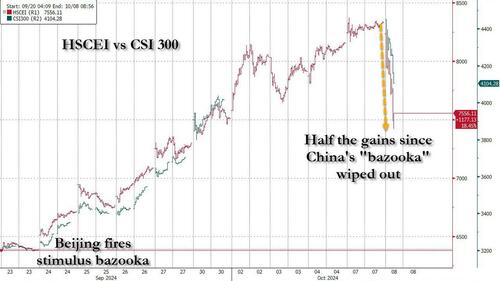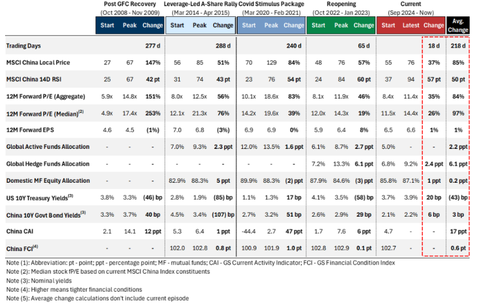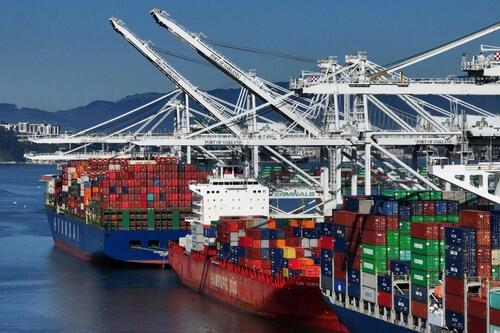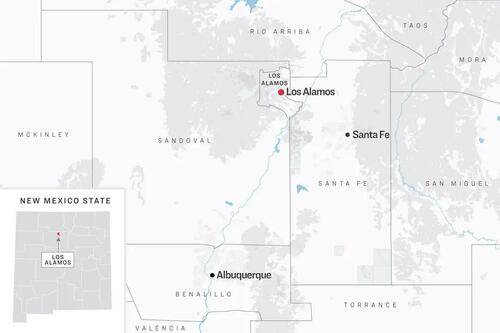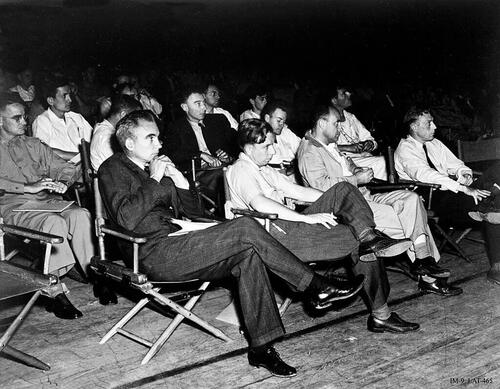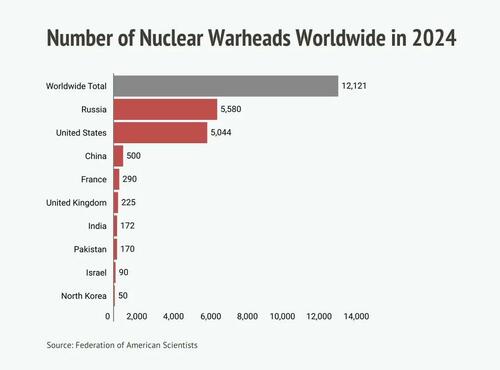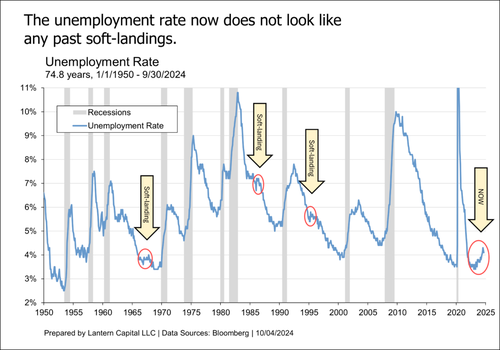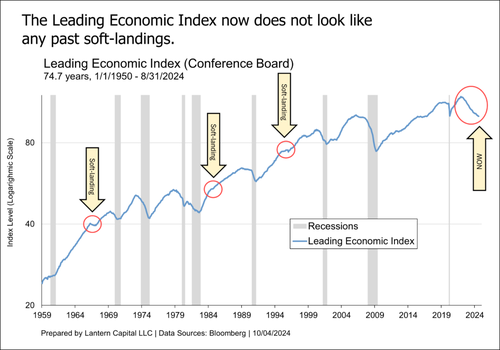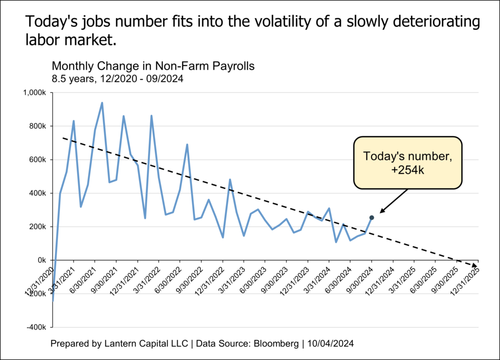No Interventionist Government Or Central Bank Wants Lower Prices
No Interventionist Government Or Central Bank Wants Lower Prices
Many citizens want more government control of the economy to curb rising prices. It is the worst strategy imaginable. Interventionist governments never reduce consumer prices because they benefit from inflation, dissolving their political spending commitments in a constantly depreciated currency. Inflation is the perfect hidden tax. The government makes the currency less valuable by issuing more units of fiat money, partially dissolves its debt in real terms, collects more taxes, and presents itself as the solution to rising prices with subsidies in an increasingly worthless currency. That is why socialism and hyperinflation go hand in hand.
Socialism rejects human action and economic calculation and sells a false image of a government that can create wealth at will by issuing more units of fiat currency. Obviously, when inflation arrives, the socialist government will use its two favorite tools: propaganda and repression. Propaganda, which accuses stores and businesses of driving up prices, and repression, which occurs when social unrest intensifies and citizens legitimately hold governments accountable for scarcity and high prices, are the two main strategies.
If you want lower prices, you need to give less economic power to the government, not more. Only free markets, competition, and open economies help decrease consumer prices. Many readers might think that we currently have a free market with competitive and open economies, but the reality is that we live in increasingly intervened and overregulated nations where central banks and governments work to perpetuate unsustainable public deficits and debt. Therefore, they continue to print more money, leading many to question why it is getting harder for families to make ends meet, buy a home, or for small businesses to prosper. The government is slowly eating away the currency it issues. They call it “social use of money.”
What is “social use of money”? In essence, it means abandoning one of the main characteristics of money, the reserve of value, to give the government preferential access to credit to finance its commitments. Therefore, the state can announce larger entitlement programs and increase the size of the public sector relative to the economy, creating a self-fulfilling prophecy. The state issues more currency, which makes people’s money less valuable. Citizens become more dependent on the state, and they will demand more subsidies paid in the currency the state issues. It is, in essence, a process of control through debt and currency depreciation.
When governments and central banks talk about price stability, it means a two percent annual depreciation of the currency. Aggregate prices rising an average of two percent is hardly price stability because it is measured by the consumer price index, which is a carefully crafted basket of goods and services weighted by the same people who print the money. That is why governments love CPI as a measure of inflation. It fails to fully reflect the erosion of the currency’s purchasing power. This is why the CPI’s basket calculation fluctuates so frequently. Even if it accurately measures, it will underestimate the rise in prices of non-replaceable goods and services by adding them to a basket of things we consume maybe once or twice a year at best. When you put together shelter, food, health, and energy with technology and entertainment, there will always be distortions.
Thus, governments and central banks are never going to defend price stability. If aggregate prices fell, competition soared, and citizens saw their real wages rise and their deposit savings increase in real value, their jobs would disappear.
When a central bank like the Fed cuts rates and increases the money supply after an accumulated 20.4% inflation in four years, it is not defending price stability; it is defending price increases. This strategy serves to conceal the government’s financial insolvency. A currency with a declining value.
Governments are the ones that create inflation by spending a currency that is constantly losing purchasing power because the state issues more than what the private sector demands. No corporation or allegedly evil oil producer can make aggregate prices rise and continue increasing annually at a lower pace. Only the one that prints the money, and central banks don’t print money because they want to; they increase the money supply to absorb rising public deficit spending.
Inflation is a hidden tax, a slow process of nationalization of the economy, and the perfect way to increase taxes without angering voters and blaming private businesses in the meantime. The consumer will likely blame the store or business for higher prices, not the issuer of a currency that loses purchasing power.
Why would governments want higher prices? Because it gives them more power. Destroying the currency they issue is a perfect form of control. That is why they need more debt and higher taxes. High taxes are not a tool to reduce debt, but rather to justify rising public indebtedness.
You may have read numerous times that the government has unlimited borrowing power and can manage inflation to allow you to live comfortably. It is false. The government cannot issue all the debt it wants. It has an inflationary, economic, and fiscal limit.
Inflation is a warning sign of declining currency confidence and a loss of purchasing power. The economic limit is evidenced by lower growth, lower employment, weaker real wages, secular stagnation, and declining foreign demand for public debt.
The fiscal limit is evidenced by soaring interest expenses even with low rates, weaker receipts every time they hike taxes, and citizens and businesses leaving the country to more friendly tax systems, all of which add to the poor or negative multiplier effect of government spending.
If you want lower prices, you should give less economic power to governments, not more.
A government that tells you it will borrow $2 trillion per annum in a growth and record receipt economy and will continue to increase debt and borrow well into 2033 with the most optimistic assumptions of GDP and receipt is telling you it will make you poorer.
When a politician promises that he or she will cut prices, they are always lying. A weaker currency is a tool to increase government power in the economy. By the time you find out, it may be too late.
Money is credit, and government debt is fiat currency. Currency depreciation is inflation, and inflation is equivalent to an implicit default. No interventionist government or central bank wants lower prices because inflation allows the government to increase its power while slowly breaching its monetary commitments.
Tyler Durden
Tue, 10/08/2024 – 07:20
Hong Kong Crashes As China’s Stimulus Frenzy Ends With A Bang
Hong Kong Crashes As China’s Stimulus Frenzy Ends With A Bang
There is some good news and some bad news for China bulls this morning (local time).
First the good news: since mainland China (aka A-shares) were closed for the past week, mainland Indexes such as the Shanghai Shenzhen CSI 300 are up – just barely – because after opening up almost 11% to catch up with the frenzied rally in offshore markets and ETFs, the index has erased almost all gains since it closed for trading on Sept 30.
For the real action, one has to go to neighboring Hong Kong, which was open while China was closed, and which proceeded to soar as much as 30% since the China stimulus bazooka was fired on Sept 23 (just two days after we said it would be). It’s also were the bad news is because one look at what the local Hang Seng China Enterprises Index is doing, and HK longs will want to throw up: as shown below, not only are HK stocks down as much as 11% after the open, but they have somehow managed to wipe out almost half the gains since the bazooka was launched in less than two hours!
What sparked this liquidation? Well, yesterday China unveiled yet another “emergency” stimulus meeting, this time held by the National Development and Reform Commission (i.e., China’s central planning bureau). Expectations were high that just like the emergency Sept 26 Politburo meeting which was led by president Xi himself, today China would unveil even more sweet, sweet stimmies.
Alas it was not meant to be, and the press conference led by Zheng Shanjie, chairman of China’s top economic planner, the National Development and Reform Commission was an epic dud: in it, Shanjie said that while external risks and downward economic pressures were increasing, they remained confident of achieving the full-year GDP growth target. He said new policy measures will focus on expanding domestic demand, increasing support and the property and capital markets.
In short, nothing new, and certainly nothing even remotely close to the Rmb 10 trillion in fiscal stimmies that many were expecting. As UBS writes, “the NDRC press conference has released no details on fiscal stimulus so far, with the Q&A session ongoing. Zheng Shanjie along with deputy heads Liu Sushe, Zhao Chenxin, Li Chunlin and Zheng Bei, were widely expected to announce an action plan at the press conference. As a result, USDCNH is coming up, while iron ore and copper are declining. Shenzhen’s ChiNext has narrowed gains to 13% from more than 18% earlier as China returned from the Golden Week holiday.“
What is the take home message here? First, that Jim Cramer was – as usual – a fade.
Cramer: “You have to come in China stocks right now”
That’s the top.
— zerohedge (@zerohedge) October 2, 2024
The second, and far more important message, is that the half life of Beijing’s latest attempt to goose markets, at just around 10 days is the shortest of all…
… and it means that with the market having called Beijing’s bluff, Xi has two options:
- Do another half-assed attempt to stimulate the economy with the very limited measures already unveiled, which he knows – and more importantly the market knows – will achieve nothing, and spark another market crash and economic meltdown, or
- Do what Goldman trader Borislav Vladimirov laid out yesterday, when he said that China Must Do QE Now, “Or It Will End Up In A Bigger Hole In 12 Months.”
And since for Xi the time for half-measures is now over, especially if he wants to avoid a deflationary spiral, social insurrection and political mutiny, this only leaves one option open: the truly nuclear one. The only question is when, because while the market may have peaked at +30% the first time China tried to goose markets, the next time we are talking triple digits, not to mention $3K gold and $100K+ bitcoin.
Tyler Durden
Mon, 10/07/2024 – 23:28
11 trans-identified women launch soccer team in Spain, lose 19-0 in first match against male team
Fenix said that despite their devastating first-game loss, what mattered most is that trans-identified people were able to play on a team together.
Watch: Hezbollah Unleashes Massive Missile Strikes On Israel’s Haifa
Watch: Hezbollah Unleashes Massive Missile Strikes On Israel’s Haifa
The last 24 hours have seen Hezbollah launch massive missile strikes on Israel’s major northern port city of Haifa. The rockets have rained down on Haifa since Sunday, and launches have continued into Monday.
Widely circulating social media videos have confirmed a series of direct ground strikes. BBC has said in a Monday update that at least five rockets have been recently launched, inuring eight people and causing damage in Haifa. Dozens more have been sent.
Israel’s military has admitted that its much-touted air defenses have been failing in the north, and says it is investigating as a result.
Hezbollah has since said it is targeting military bases near Haifa, but local reports say a restaurant was among the places to be directly struck, resulting in significant damage.
Jerusalem Post writes that “a restaurant in Haifa had reportedly suffered a direct hit as approximately 20 rockets were identified crossing from Lebanese territory.”
“Among those evacuated for medical treatment, a 13-year-old was reportedly lightly wounded, while two others were moderately wounded from broken glass,” the report details. “Three people sustained light injuries from broken glass, two were lightly injured while heading to a protected area, and one person was treated for anxiety.”
And separately another local media report cites damage in the middle of the city: “Footage captured in Haifa, however, appeared to show heavy damage at a traffic circle struck by a rocket, while other videos showed smoke rising above apartments during the barrage.”
Watch: most significant strikes on Haifa since war’s start…
⚡️Hezbollah conducts strikes in Israeli city of Haifa pic.twitter.com/u4o7kemWvg
— RT (@RT_com) October 6, 2024
On Sunday alone a total of some 120 rockets were fired by Hezbollah into northern Israel. By all accounts these projectiles have been reaching further and further into Israel, since the start of the IDF bombing campaign over southern Beirut.
Injuries have also been reported from the town of Tiberias. It has become clear that thus far Israel’s ground offensive in south Lebanon and bombing of Beirut has not stopped Hezbollah rockets from reaching deep into the north.
Among Israel’s chief goals for the Lebanon offensive is to push Hezbollah back dozens of kilometers, to create a buffer zone which will allow Israeli residents of the north to return to their homes.
Al Arabiya confirmed footage which captured the Hezbollah hit on a Haifa restaurant…
مقاطع فيديو تظهر إصابة مباشرة لأحد المطاعم في #حيفا بعد الصواريخ التي أطلقها حزب الله من جنوب #لبنان#قناة_العربية pic.twitter.com/WuBlmBIbcf
— العربية (@AlArabiya) October 7, 2024
Israel’s aerial bombardment of Beirut has remained steady, with jets on Sunday night targeting buildings said to belong to Hezbollah’s intelligence division in Beirut, or places deemed command centers, according to Israeli statements.
Apparent weapons depot in the middle of the Lebanese capital blown up:
BREAKING:
HUGE new explosion as Israeli airstrikes hit another Hezbollah weapons depot in Beirut.
Why would you store these rockets and explosives among civilian homes in your capital city?
Many Lebanese people living in Beirut must be furious with Hezbollah. pic.twitter.com/pvfzqEwRc0
— Visegrád 24 (@visegrad24) October 6, 2024
Images showed an a strike on an apparent Hezbollah weapons depot, releasing huge and sustained fireballs and secondary explosions. The IDF on Monday warned that the Israeli Navy will soon begin to operate against Hezbollah from the sea.
Tyler Durden
Mon, 10/07/2024 – 18:00
Native man accuses Australian TV networks of exploitation after he was rescued from cannibal tribe set on murdering, eating him when he was just 6-years-old
“I’m afraid of being tricked again or used as material for their media.”
AVI ABELOW: Israel’s fight for survival is crucial to U.S. foreign policy
A strong Israel isn’t just about the survival of the Jewish state; it’s about maintaining stability in the Middle East and securing American interests worldwide.
CCP Targets US Shipping Infrastructure
CCP Targets US Shipping Infrastructure
Authored by Antonio Graceffo via The Epoch Times (emphasis ours),
A congressional investigation uncovered concerns about Chinese Communist Party (CCP) influence in cranes at U.S. ports, pointing to the discovery of surveillance equipment and ties to China’s military, which poses a national security threat to U.S. shipping infrastructure.
The House Homeland Security Committee and the Select Committee on the CCP recently released a report highlighting the growing threat to U.S. security from China’s dominance in the global maritime industry.
The report focuses on Shanghai Zhenhua Heavy Industries (ZPMC), a Chinese state-owned company that manufactures about 80 percent of the ship-to-shore (STS) cranes used at U.S. ports. The investigation found that these cranes pose cybersecurity and national security risks due to embedded technology that could allow the CCP to access or disrupt U.S. port operations. Additionally, ZPMC has pressured some U.S. port operators to grant remote access for maintenance and diagnostics, raising concerns about potential espionage and sabotage.
China’s control over maritime infrastructure and data collection poses serious vulnerabilities for the United States and its allies. Lawmakers are pushing for U.S. ports to switch to alternative crane manufacturers, but ZPMC’s market dominance complicates this effort. The CCP’s national security and intelligence laws require companies like ZPMC to support intelligence activities, further heightening the threat to U.S. infrastructure.
A recent report revealed that ZPMC cranes contain cellular modems that are unnecessary for their operation, which could be used for intelligence gathering, and were not part of the purchase agreements with U.S. port authorities. ZPMC’s close ties to China’s security apparatus are also a concern, with its base located near a warship-building shipyard. Moreover, ZPMC’s chairman, Liu Chengyun, leads the company’s internal Communist Party committee, making the company vulnerable to CCP influence.
The congressional committee sent a letter to ZPMC demanding explanations about its ties to the CCP, whether it received subsidies from Beijing, and whether the cranes contained surveillance equipment.
ZPMC responded that, under China’s data security law, CCP approval was needed to answer the committee’s questions. The company also requested that the committee sign a nondisclosure agreement, which was refused. While ZPMC claimed there was no evidence that Chinese intelligence or security services had required them to modify equipment for U.S. ports with surveillance devices, they cited the law on “guarding state secrets” as a reason for not disclosing the nature of their relationships with the Ministry of State Security.
The company’s ties to the CCP are undeniable. You Ruikai, ZPMC’s chairman and president, also serves as the party secretary for the internal Party committee, whose members are elected by the Party members of ZPMC.
To date, ZPMC has not clarified to the U.S. committees who the internal Party committee reports to in Beijing or what information is shared. ZPMC issued a statement on its website expressing offense at the allegations made by U.S. authorities and insisting that its cranes pose no cybersecurity threat.
Meanwhile, Xinhua, the CCP’s media outlet, has accused the United States of fabricating a China threat, despite Chinese laws that compel companies to gather intelligence and prohibit them from revealing their links to Beijing.
ZPMC is a subsidiary of the state-owned China Communications Construction Ltd. (CCCC), which has faced significant U.S. sanctions.
In August 2020, the U.S. Department of Commerce added several CCCC subsidiaries to the Bureau of Industry and Security’s Entity List due to their role in militarizing artificial islands in the South China Sea. That same month, the U.S. Department of Defense identified CCCC as one of the “Chinese military companies“ operating in the United States.
In November 2020, then-President Donald Trump issued Executive Order 13959, prohibiting American companies and individuals from owning shares in firms like CCCC linked to the People’s Liberation Army.
In December 2020, the Department of Commerce added CCCC to the Entity List, banning it from purchasing American products.
In 2021, President Joe Biden not only upheld Executive Order 13959 but expanded it, stressing the need to prevent the CCP from using U.S. investors and customers to finance China’s military-industrial complex. This included China’s involvement in military, intelligence, and security research, as well as weapons production through its Military-Civil Fusion strategy, which potentially makes all Chinese companies tools of the CCP by merging civilian and military sectors. Biden also warned that the CCP’s use of surveillance technology posed a serious threat to U.S. national security, foreign policy, and the economy.
The CCP uses economic statecraft to increase U.S. reliance on Chinese equipment and technology, particularly in the maritime sector. U.S. federal law enforcement agencies have confirmed that Chinese state-owned enterprises aggressively seek to establish a strategic presence at key ports, leveraging subsidies to gain influence. China’s subsidies make ZPMC cranes half the price of competitors, leaving U.S. ports with few alternatives. The Association of American Port Authorities has recommended rebuilding domestic crane manufacturing to reduce dependency on Chinese products.
Views expressed in this article are opinions of the author and do not necessarily reflect the views of The Epoch Times or ZeroHedge.
Tyler Durden
Mon, 10/07/2024 – 06:55
New Mexico’s Nuclear Town Has Big Housing Problem
New Mexico’s Nuclear Town Has Big Housing Problem
Authored by Allan Stein via The Epoch Times (emphasis ours),
Weekends bring a brief respite and slower pace to the Los Alamos townsite in New Mexico, the birthplace of the atomic bomb nearly 80 years ago.
Silent mountains thick with Ponderosa pine surround the town where some of the nation’s best-kept military secrets reside.
The urban sidewalks are empty, except for the occasional tourist or dog walker, and many of the shops, restaurants, and office buildings are closed.
There’s no traffic on the road from Trinity Drive to Oppenheimer Drive.
But, it’s just a matter of time before Los Alamos townsite jumps back into action.
“You will see it on Monday,” said one resident, who lives in White Rock, 10 miles from the greenscaped Los Alamos urban center.
Sure enough, on Monday morning, Los Alamos townsite roars back to life as commuters arrive by the thousands. The population nearly doubles in this “census-designated place” of 13,460.
Cars line up at security checkpoints to enter the Los Alamos National Laboratory (LANL), the county’s biggest employer and the reason for the sudden increase in population.
Employees clear the first barriers, then move through more checkpoints to get to their jobs four days a week.
Many drove from residential areas across Los Alamos County (population 19,187) and as far away as Albuquerque, 96 miles south, and the state capital of Sante Fe, about 35 miles north.
There has always been a housing shortage in the county, local officials say, but the pressures are growing as LANL reaches peak employment at around 19,000. The lab hopes to begin offering round-the-clock shifts in 2025.
The Los Alamos Affordable Housing Plan approved in August said the “acute” housing shortage hurts the local economy and limits housing to those who can afford it.
The study also found that in 2021, nearly 55 percent of the LANL workforce lived outside the county.
“Over 9,300 people commuted in for work, and only 21.8 percent, or 2,200 people, commuted out of the county while living here,” the study said.
‘One Horse Town’
“We’re a one horse town. Everything the lab does affects everybody,” said local realtor Chris Ortega, owner/broker of ReMax Los Alamos.
“The hiring has increased demand. There are fewer houses on the market than there were five or six years ago,” Ortega told The Epoch Times.
“People are coming and going all the time. Half of the lab lives here in Los Alamos. The other half lives off the hill somewhere—Santa Fe, Espanola, Albuquerque.”
In 2022, there were 8,149 households, 5,229 with families, in Los Alamos County. They were usually made up of two or three people per household and had an average income of $135,801.

“Based on employment rates and high wages, a family household making more than median income is likely to have a member of the family employed at Los Alamos National Laboratory,” according to the study.
A plurality of LANL employees agreed in a previous study that it would be beneficial to live in Los Alamos, provided they can find suitable housing near the lab.
Housing is hard to find and has been for a long time. Now, it’s worse because of LANL’s latest hiring surge that started around 2022 with the government’s plan to modernize the U.S. nuclear arsenal.
“It’s difficult [to find housing]. We hear it anecdotally from people we’re hiring—people from the lab,” said Linda Matteson, assistant county manager for Los Alamos County.
Only 14 percent of the land around Los Alamos is county-owned or privately owned, she said. The U.S. Forest Service, Park Service, and U.S. Department of Energy (DOE) own the rest.
“We’re very constrained,” Matteson told The Epoch Times. “Of that 14 percent, think about private houses, private land. Think of our geography with mesas and canyons. It’s limited. We, the county, own less than 10 parcels that we could develop. Some are open spaces that you wouldn’t want to develop.”
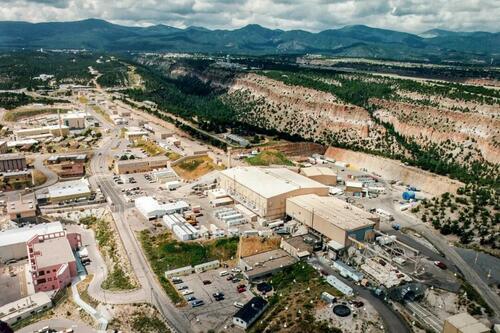
The plan found that because there isn’t enough housing, many people who do essential work in the community can’t live in the community.
The median sold price of homes in Los Alamos was $599,583 in September, representing a 6.3 percent increase from last year, according to a Rocket Homes report. In the same month, there were 61 homes listed for sale.
According to the housing plan, rental costs have more than tripled. Real estate website Zillow lists 33 current rentals available and a 3 bed, 1 bath house is listed for about $3,000 per month.
The lab employed 11,743 workers in 2018 and 15,707 workers in 2022, and it is hiring hundreds more this year and next before slowing down.
Meanwhile, in the same four-year timeframe, the county population only grew by 400 people because of housing constraints.
“This reflects the high percentage of commuters into the county, a limited supply of available housing, and the potential displacement of families with less financial resources by those with more,” the plan noted.
The plan projects that the county will require 1,300 new homes between 2024 and 2029 to preserve the status quo, and 2,400 new homes to meet future housing demand.
Tax Revenue
The fiscal year 2022 budget for LANL included nearly $2 billion in salaries for employees and $155 million in tax revenues for the county.
The lab was responsible for creating 24,169 jobs and contributing $3.12 billion to businesses in New Mexico.
Matteson said that LANL accounts for about 85 percent of the Los Alamos County’s gross property tax revenues.
“People come here because of the quality of life and amenities and things like that. The county feels it’s our job is to maintain those, increase where we can, and provide those services so people still want to live here,” Matteson said.
In September 2022, LANL announced its master development plan for the next 30 years.
The plan includes an upgraded facility powered by 100 percent renewable energy from solar and wind. The goal is to have zero carbon emissions by 2040.

Atomic Legacy
LANL has come a long way since the top-secret Manhattan Project at Los Alamos that made the first atomic bombs used at the end of World War II.
On Aug. 6, 1945, the United States dropped a uranium bomb called “Little Boy” on Hiroshima, Japan. Around 140,000 people died in the explosion, which had the force of 15 kilotons of TNT.
On Aug. 9, 1945, the second 21-kiloton atomic bomb, dubbed “Fat Man,” was dropped on Nagasaki, Japan. It killed 74,000 people.
Los Alamos National Laboratory, built in 1943, played a leading role in the development and production of the U.S. nuclear arsenal during the Cold War.
The $39 billion facility is located about 35 miles from Santa Fe. It covers nearly 40 square miles of DOE property, nearly 900 buildings, and 13 nuclear facilities.
From 1952 to 1989, plutonium production for U.S. nuclear weapons took place at the Rocky Flats plant near Denver.
When Rocky Flats closed, PF-4 at Los Alamos became the only plutonium facility in the country. The National Nuclear Safety Administration (NNSA) monitors and oversees the recycling of plutonium from old pits to make new ones by LANL.

“Today, the Laboratory is laying the groundwork for manufacturing new pits that are bound for a weapon already in the stockpile, the W87-1 nuclear warhead,” according to LANL.
“Los Alamos National Laboratory remains the only place in the country where pits can be made. This critical mission endures as the driving force for national security through deterrence.”
LANL declined a tour request by The Epoch Times.
Building a Better Bomb
The 2022 Nuclear Posture Review of the U.S. Department of Defense identified improving America’s nuclear deterrent as a top priority in the face of emerging global threats and challenges.
“That modernization effort, which is being carried out over the next two decades, includes initiatives to modernize all three legs of the nuclear triad,” according to a Defense Department statement.
The new intercontinental ballistic missile (ICBM) system, Sentinel, will replace the old Minuteman III, which entered service in 1970 and will continue to operate until the mid-2030s.
The Columbia class ICBM submarine will replace the Ohio class submarines, and the B-21 Raider will replace the B-2A Spirit bomber.
The program also calls for upgrading nuclear warheads at LANL, which the DOE controls. The research and production capabilities of the lab are central to that modernization effort.
A law passed in 2018 authorized the lab’s plutonium production facility to make 30 plutonium warhead cores, or “pits,” each year by 2026. They will be used to replace the cores in the aging nuclear stockpile.
The nuclear weapons to receive the plutonium pits made at LANL include the W87-1 warhead for the next-generation Sentinel ICBM, the submarine-fired W93 bomb, and the W76, W78, and W88 warheads.
As reported by the Federation of American Scientists, there are 12,121 known nuclear warheads in the world in 2024.
There were 5,580 in the Russian Federation, 5,044 in the United States, 500 in China, 290 in France, 225 in the United Kingdom, 172 in India, 170 in Pakistan, 90 in Israel, and 50 in North Korea.
Read the rest here…
Tyler Durden
Sun, 10/06/2024 – 23:20
On The Jobs Report And Recession
On The Jobs Report And Recession
Submitted by Eric Hickman of Lantern Capital
The strong jobs report today (+254k) caused the dam to break on what I’ve been writing about for weeks with Treasury yields. The 2-year yield is higher by 22 basis points today. With the 2-year now at 3.93%, the bond market is priced for the Fed to cut rates to 3.25% by March of 2026. This would be a 25-basis point cut at 7.5 of the 12 meetings in between now and then. This seems like fair pricing for the conditions given the Fed’s desire to slowly get rates back to neutral.
But I’ve never seen a big pop like this be limited to just one day. I expect yields to continue rising for a while (particularly at the front-end of the yield curve) until negative economic data reasserts itself. The narrative from Austan Goolsbee, president of the Chicago Fed, and Jerome Powell is that the Fed is going to cut rates back to neutral (somewhere around 3%) with or without economic weakness. But Fed hawks are going to quickly worry about inflation after today and try to un-do the favorable financial conditions (low Treasury yields). For instance, Larry Summers said today that cutting 50 basis-points was a mistake. It wasn’t given the regularity of the business cycle, but he is a good barometer for the hawkish side of the Fed. I expect for some member of the FOMC to say a version of “don’t count on us cutting back to neutral.” If this is said, the 2-year will become un-moored. The jobs number today represents a narrative change, and it is a process to work through before rates fall again in this Treasury bull market.
But today’s economic data doesn’t change my expectation of a recession one bit; it just suggests it is further away until more negative economic data comes along. The preconditions are set and make economic sense. The inverted yield curve, the unemployment rate rising, and Leading Economic Index have all signaled a recession is coming. Historically, if two of these signal, a recession occurs. In this cycle, all three have signaled. See this image for further detail. Soft-landings have one or none of these conditions and are pretty evident in the charts below.
The arguments against this are that a recession hasn’t come yet, the Fed is going to lower rates before one comes, and that there are no economic imbalances to correct. Responding to the first, a recession has likely been delayed because of large fiscal deficits. The U.S. deficit to GDP in 2023 was 6.3%. The European Union, that began to cut rates the earliest of the G-7 in June, had a much-lower deficit to GDP of 3.6% in 2023. The UK, that began to cut rates in August, had a deficit of 4.4% of GDP in 2023. This correlation is too simplistic, but the point is that deficit spending buys temporary GDP growth and the U.S. has spent the most among the G-7, likely delaying the business cycle.
Second, the Fed is not going to be able to cut blindly down to neutral (around 3%). Inflation is a concern every step of the way and the reason why the Fed can never get ahead of the business cycle. Today is a good example with Larry Summers’ comments. The Fed needs to see escalating economic weakness as they cut to make them feel comfortable about inflation. I wrote more about this here.
In response to the third, risk-markets (i.e., the stock market) are the imbalance. The S&P 500 has returned 16.9% annualized (total return, dividends re-invested) since the Great Financial Crisis low on March 6th, 2009. It isn’t unusual for the stock market to go through 9-18 year periods with high returns like this, but it has been 15.5 years so far and with the labor market deteriorating, I think a recession is going to start a long period of mean reversion. See chart here.
Today’s jobs number fits into the volatility of a slowly deteriorating labor market and there are plenty of examples of big jobs numbers before recessions. Looking at initially reported data (not revised), non-farm payrolls were +372k in February 1990, six-months before that recession began. Payrolls were +268k in January 2001, two months before that recession began. And payrolls were +166k in October of 2007, two months before the Great Recession began. See chart below.
It is hard to find someone that doesn’t think this cycle will result in a soft-landing, but the time-tested signals are very clear about the opposite and the incentives to be optimistic among nearly everyone build-up the soft-landing theme into a bigger thing than it is. In a telling part of Jerome Powell’s interview with the President of the NABE (National Association of Business Economics), Ellen Zentner on Monday, Jerome Powell wouldn’t acknowledge a soft-landing,
ZENTNER: Do you think that the 50 basis points you delivered in September. That cut, you described as a strong start. Did that cut give you more confidence in a soft landing?
POWELL: [4-second pause] I would put it this way. It is a reflection of our confidence that inflation is moving sustainably down. Or, our growing confidence that it is moving sustainably down to 2%. You know, as I mentioned, our design overall is to achieve disinflation down to 2% without the kind of painful increase in unemployment that is often associated with disinflation processes. That’s been our goal all along. We’ve made progress towards it. We haven’t completed that task. I think you’ll see us using our tools in a way that shows our commitment to achieving that. I don’t want to make a judgement about its likelihood, I just want you to know that we are committed to using our tools to do everything we can to achieve that outcome.
ZENTNER : Well you know economists everyday are asked for a probability of a soft-landing. I try very artfully to avoid it, but I just have high hopes.
Think of how easy it would’ve been for him to say “yes” if he felt that way. Ellen Zentner’s response is a perfect encapsulation of how business economists feel, they try to be optimistic despite what they may see. Not only do I see a recession coming, but I’ve yet to see a credible reason why it wouldn’t. Today’s jobs number has nothing to do with it.
Tyler Durden
Sun, 10/06/2024 – 17:30
MORGONN MCMICHAEL: University of Wyoming women’s volleyball forfeits match against team with trans-identified male
“After a lengthy discussion, the University of Wyoming will not play its scheduled conference match against San Jose State University in the UniWyo Sports Complex on Saturday, Oct. 5.”


